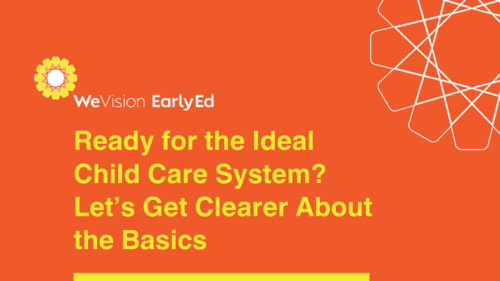WeVision EarlyEd is all about defining the ideal child care system and making the ideal real, but are we ready to lead the change? Families and early childhood professionals, our “proximity experts,” are clear about what they want in their ideal child care system — one that is child-centered and quality-centered. They want government policies and public funding that make sense so that young children, and the adults who care for them, have the resources needed to grow and thrive. The child care math ain’t mathing for them.
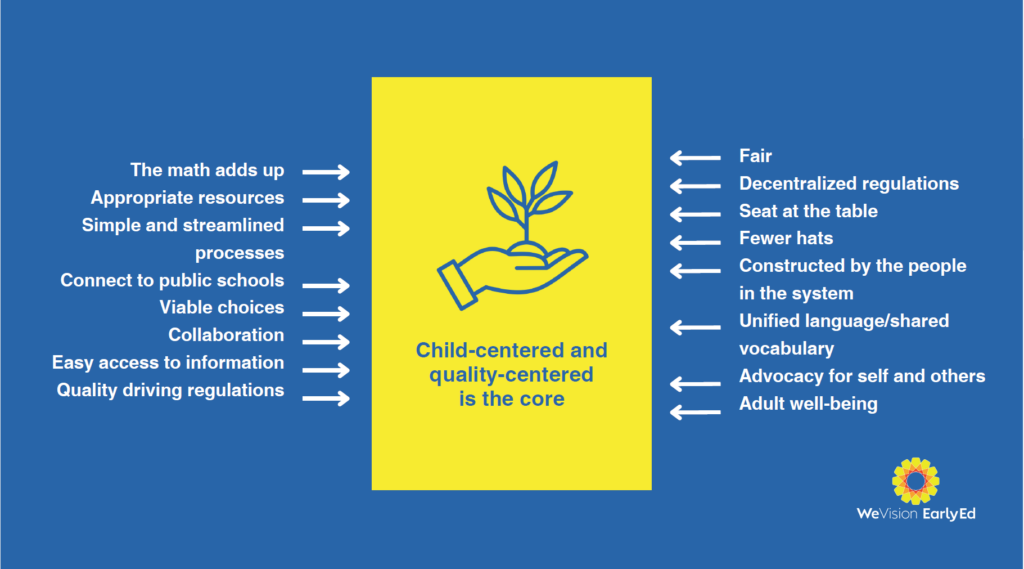
This broad definition of the ideal child care system is a strong springboard to help us unite around a shared understanding, but further details are needed. Taxpayers and lawmakers in particular will have some fundamental questions and we owe them clear and coherent responses. How we answer the following questions will help determine what is funded and how.
- What do we mean by “child care”? Just what happens in regulated early childhood education programs (in schools, homes, or centers)? Or does child care offered by other trusted caregivers (like parents, families, community members, co-ops, nannies, and au pairs) count, too?
- Which families need support for child care? Mainly families meeting low-income thresholds or families who are employed? Is child care support only an intervention for families with children experiencing poverty? Or all families?
- Which child care options should the government fund? What do these options cost? How are the options similar or different? Should we subsidize child care only for the regulated early childhood education programs (in schools, homes, or centers)? Or, can government funding support child care provided by other trusted caregivers? And do the subsidies account for the real cost of quality early childhood education, notably competitive compensation for early childhood education professionals?
- Who comprises the “early childhood education profession”? How are they different from family members and other adults who care for young children? If they are not different, why are they needed?
- What is “quality” early childhood education? Is there a perfect definition? Who defines it? Do the field and young children really benefit when every jurisdiction and funding stream comes up with its own definition of quality? Or, should we have a consistent baseline set of quality standards upon which early childhood education professionals and families can add supplementary and specialized services?
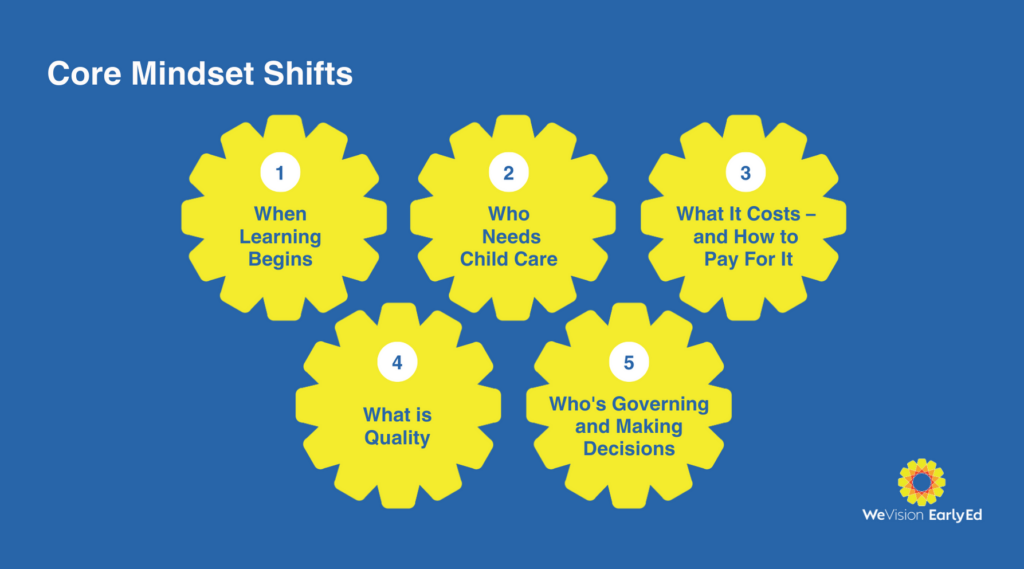
How we answer these fundamental questions will reveal our mindsets about young children, families, and early childhood professionals. These often invisible mindsets are rooted in our values, lived experiences, biases, and beliefs. Some of these help us move closer to our idealized future, as defined by our proximity experts, whereas others are archaic and keep the current child care system in place. Systems change experts suggest examining our mindsets if we want the type of transformative change needed to make the ideal child care real. The policies, regulations, and funding levels we see are all held in place by our mindsets. WeVision EarlyEd boldly names five core mindset shifts we need to consider. Additional discussion will reveal where we are aligned and where there is divergence.
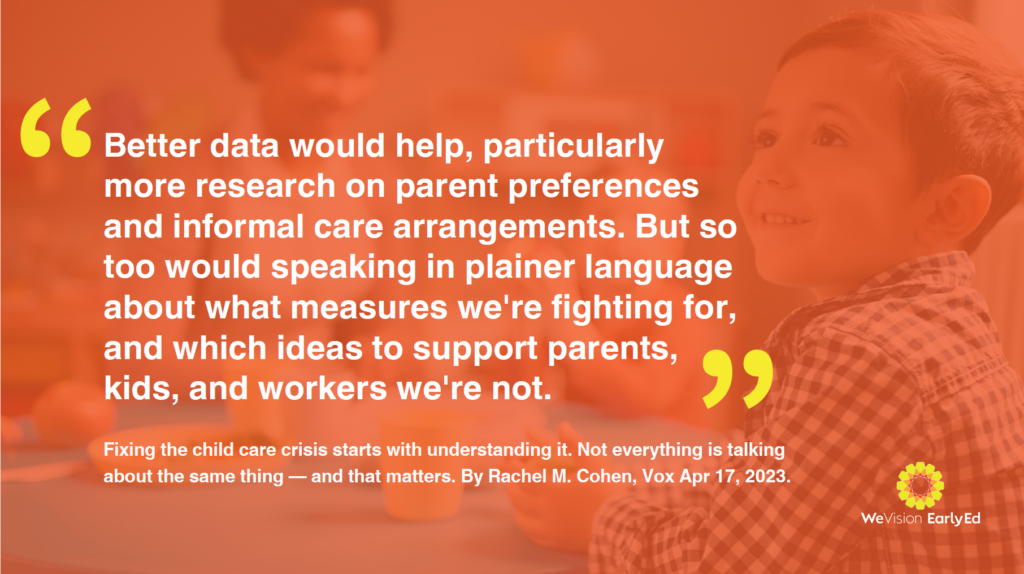
Future Readiness Test
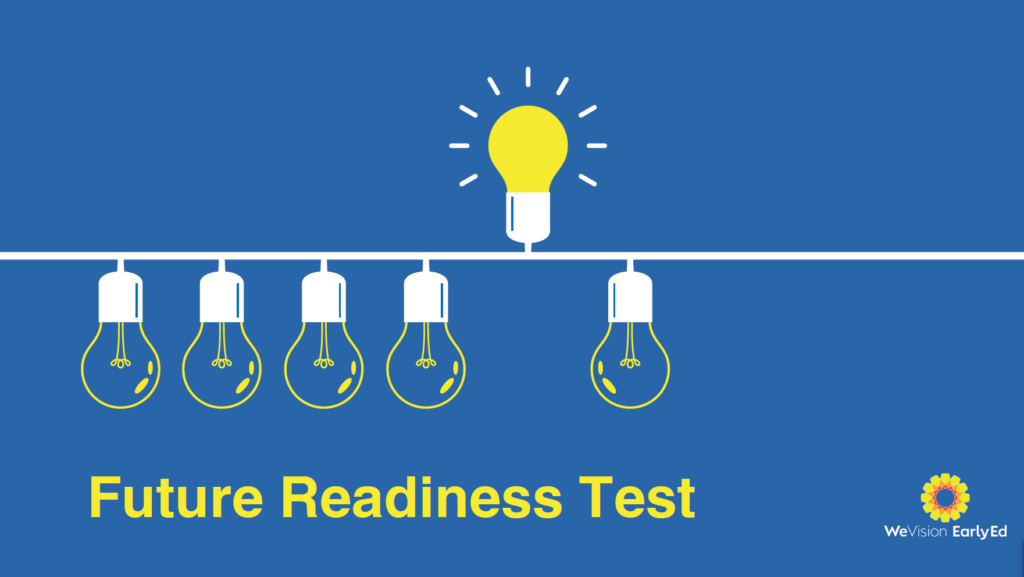
We want to hear from you. Rate your current comfort level with these mindsets and basic details. Click here to complete this three-minute future readiness survey. We will share the results in our upcoming blog.

